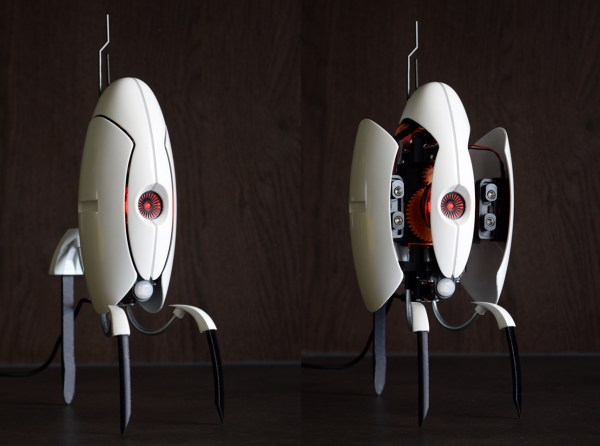With a long history of nearly universal hate for their products, you’d think printer manufacturers would by now have found ways to back off from the policies that only seem to keep aggravating customers. But rather than make it a financially wiser decision to throw out a printer and buy a new one than to buy new ink cartridges or toners, manufacturers keep coming up with new and devious ways to piss customers off. Case in point: Hewlett-Packard now seems to be bricking printers with third-party ink cartridges. Reports from users say that a new error message has popped up on screens of printers with non-HP cartridges installed warning that further use of the printer has been blocked. Previously, printers just warned about potential quality issues from non-HP consumables, but now they’re essentially bricked until you cough up the money for legit HP cartridges. Users who have contacted HP support say that they were told the change occurred because of a recent firmware update sent to the printer, so that’s comforting.
ESP32 Projects From Northwestern University’s Embedded Electronics Class
Northwestern University’s Embedded Electronics Class delivered a bumper crop of ESP-32 projects this year. The student teams recorded their progress on hackaday.io with project descriptions, logs, BOMs, diagrams, photos, and videos to share with other makers. While all utilized the web connection that the ESP32 offers some teams chose to use ESP32 Cams to incorporate photos, video, and computer vision. We love the variety of projects the teams created, some customized versions of consumer products and others new types of smart-devices. Continue reading “ESP32 Projects From Northwestern University’s Embedded Electronics Class”
Knife Throwing Machine Gets The Spin Just Right
Despite how it might appear in bad action movies, throwing a knife and making it stick in a target is no easy feat. Taking inspiration from the aforementioned movies, [Quint] and his son built a magazine-fed knife throwing machine, capable of sticking a knife at any distance within its range.
Throwing a sharp piece of metal with a machine isn’t that hard, but timing the spin to hit the target point-first is a real challenge. To achieve this, [Quint] used a pair of high-performance servo motors to drive a pair of parallel timing belts. Mounting a carriage with a rotating knife-holder between the belts allows for a spinning throw by running one belt slightly faster. The carriage slides on a pair of copper rails, which also provide power to the knife holder via a couple of repurposed carbon motor brushes.
At first, the knife holder was an electromagnet, but it couldn’t reliably hold or release the stainless steel throwing knives. This was changed to a solenoid-driven mechanism that locks into slots machined into the knives. Knives are fed automatically from a spring-loaded magazine at the back as long as the trigger is held down, technically making it full-auto. To match the spin rate to the throwing distance, a LIDAR sensor is used to measure the distance, which also adjusts the angle of the aiming laser to compensate for the knife’s trajectory.
The development process was fraught with frustration, failure, and danger. Unreliable knife holders, exploding carriages, and faulty electronics that seemingly fired of their own accord were all challenges that needed to be overcome. However, the result is a machine that can both throw knives and nurture a kid’s passion for building and programming.
Continue reading “Knife Throwing Machine Gets The Spin Just Right”
Anyone Can Be The Master Of This Master Lock Safe
[Etienne Sellan] got one of these lovely $5 logic analyzers. As with any shiny new tool, he started looking for things to investigate with it, and his gaze fell on a Sentry Safe (produced by Master Lock). On the surface level, this keypad-equipped safe is designed decently when it comes to privilege separation. You can take the keypad board off and access its backside, but the keypad doesn’t make any decisions, it merely sends the digits to a different board embedded behind the safe’s door. The solenoid-connected board receives the PIN, verifies it, and then controls the solenoid that unlocks the safe.
[Etienne] hooked up a logic analyzer to the communication wire, which turned out to be a UART channel, and logged the keypad communication packets — both for password entry and for password change. Then, he wrote some Arduino code to send the same packets manually, which worked wonders. Bruteforcing wasn’t viable, however, due to rate limitation in the solenoid controller. Something drew his attention from there – if you want to change the password, the keypad requires you enter the factory code, unique to each safe and supplied in the instruction manual. That code entry is a separate kind of packet from the “change password” one.
More after the break…
Continue reading “Anyone Can Be The Master Of This Master Lock Safe”
3D Printed Portal Turret Moves And Talks Like The Real Thing
Thanks to its innovative gameplay and quirky humor, Portal became an instant hit when it was released in 2007. Characters became cultural icons, quotes became memes and the game became a classic along with its 2011 sequel. Even today, more than a decade later, we regularly see hackers applying their skills in recreating some of the game’s elements. One beautiful example is [Joran de Raaff]’s physical rendition of a Portal Turret.

[Joran] decided to use his 3D printer to create a Turret that can move and speak exactly as it does in the game. The result, as you can see in the video embedded below, was a triumph. We’re making a note here, “huge success”. The outer shell is a beautiful shiny white, an effect achieved through patient sanding, priming, and spraying with high-gloss paint. The internals are even more impressive with servos, microswitches, and a whole array of 3D-printed gears, cams, and levers.
A motion sensor activates the Turret whenever a human moves nearby. It will then open its wings and fire its guns while playing the corresponding sounds from the game. Its brains are formed by a Wemos D1 which drives the various LEDs and servos, while an MP3 player board holds a library of sound bites and plays them through a speaker hidden inside the Turret’s shell.
After posting his creation on YouTube [Joran] got many requests for the 3D files, so he made them available and wrote a comprehensive build guide. This should enable anyone with a 3D printer to build this neat gun, without getting too much science done. If this model is too small for you, then perhaps this life-sized model is more to your liking. If you prefer your Turret small and cute, check out this plushie version.
Continue reading “3D Printed Portal Turret Moves And Talks Like The Real Thing”
Robot Nerf Alarm Blasts You Awake With Foam

A Nerf Rival Nemesis MXVII-10K flywheel blaster is the core of the build, with a 100-round capacity of soft foam balls. Stepper motors are used to control a pan and tilt system to aim the blaster. It’s moved under instruction from a Raspberry Pi that uses machine vision algorithms running on a Coral USB accelerator to track targets in the bedroom. A relay board is then used to activate the blaster’s firing action, blasting any targets until they wake up.
[Vinnie] had plenty of fun during build, also showing the sentry gun off to his coworkers in the office. It’s a hard sentry to dodge, with the machine vision algorithm using a full-body tracking model, so merely covering one’s face won’t be enough to get away.
We’ve seen all kinds of sentry guns over the years, from those firing rubber bands to others spraying jets of water. Video after the break.
Continue reading “Robot Nerf Alarm Blasts You Awake With Foam”
Automated Turret Keeps Dorm Clean, RoboCop Style
Students’ dorm rooms are not generally known to be the most orderly of places. Whether it’s mountains of dishes in the sink, piles of clothes waiting to be washed, or random bits and bobs strewn across the hallway, cleaning up is pretty low on the agenda for many dorm dwellers.
[Luis Marx] seems to have invented a useful solution to his (or his roommates’) sloppiness: a robotic turret that opens fire on anyone who leaves items unattended (video, in German, embedded below). This system uses a set of “clutter sensors” that can be placed in strategic locations around the house and will detect stray objects using ultrasonic sensors. If any are found, the main system is alerted through WiFi. The turret will then search for any persons in its vicinity and start shooting them with little plastic balls.
The turret in question is a beautifully-designed piece of kit made from 3D printed parts and controlled by an ESP32. It can swivel around its axis and tilt up and down using two servos, while its firing mechanism is driven by a DC motor. It tracks its target thanks to a camera-based object sensor that can recognize humans. The whole thing gives us a bit of a RoboCop vibe; we’d half expect it to shout Pick up those clothes. You have twenty seconds to comply.
While this might not be the definitive solution to messy dorm rooms, we like the creative thinking behind it. We’ve seen auto-targeting turrets before, but not in household applications like this. Of course there are plenty of other robots that can help you with domestic tasks.
Continue reading “Automated Turret Keeps Dorm Clean, RoboCop Style”


















